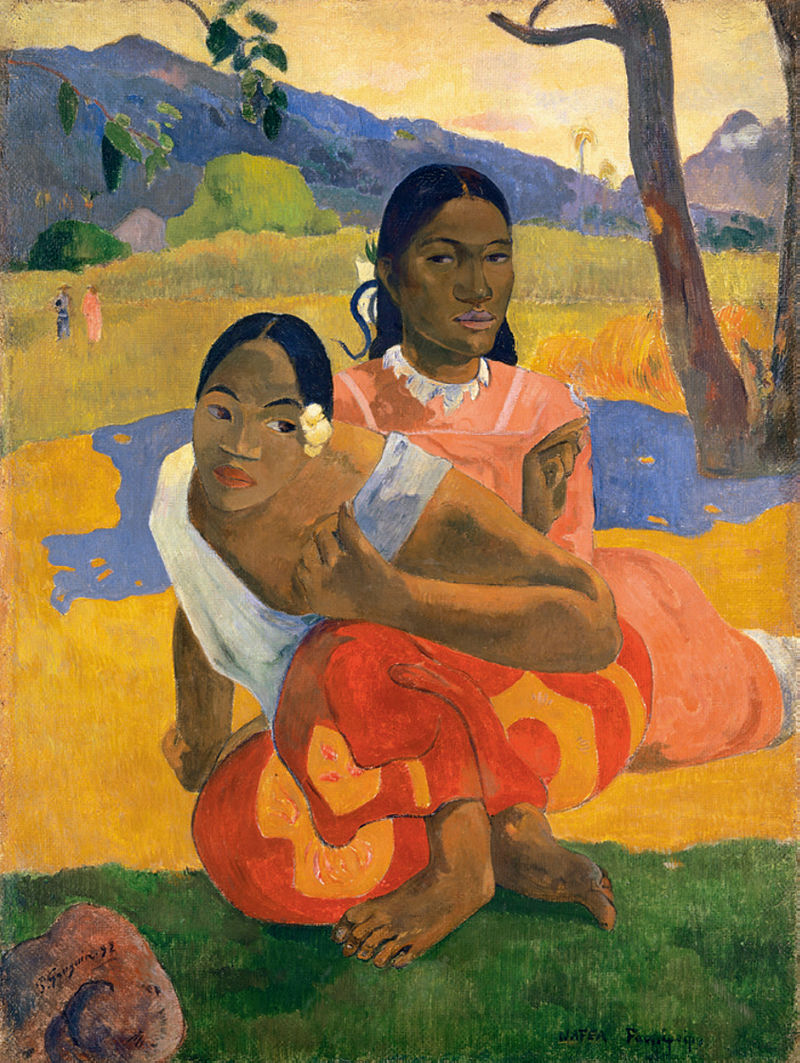With the current economic woes affecting people around the world, artists are on the front line of those adversely affected. The value placed on art becomes ever more important, for everyone involved in the artistic world. So a heartening piece of news is yesterday's announcement that TEFAF Maastricht 2009, the most important and prestigious art and antiques fair in the world, has been a successful fair, with sales strong and museums still buying (www.artdaily.org/index.asp?int_sec=28int_new=29771).
Paul Gauguin, Nafea Faa Ipoipo? (When Will You Marry?) 1892, oil on canvas (Image courtesy of the Beyeler Foundation)
One still is left with the nagging question : are we into a new era now, where a higher value is placed on a piece of art for its content, its aesthetic, its humanism... rather than just the value placed on it by the market place, with all its fashions, fads and tendency to treat art as a commodity?
It is always said that an individual buyer should buy a piece of art because he or she likes it and wants to live with it. That dialogue with the art can take innumerable forms but the bottom line is that ideally, there should be a genuine positive reaction to the art. Since art can enhance, enlighten, amuse, inspire, calm, instruct, distract..., on a daily basis, the value placed on the art can end up being rather subjective. Nonetheless, in stressful times such as these, it seems that people increasingly turn to art, music, poetry, and other such creative ventures. Thus their value is much more than monetary. The WPA art projects are an eloquent reminder of how valuable art was held to be during the Great Depression.
If there are still buyers willing to pay high prices for art esteemed to be of high quality, it seems that connoisseurship is trumping fads and fancies of the moment. That is good news for those who value art that addresses aesthetic and humanist aspects and what each work is trying to say.
